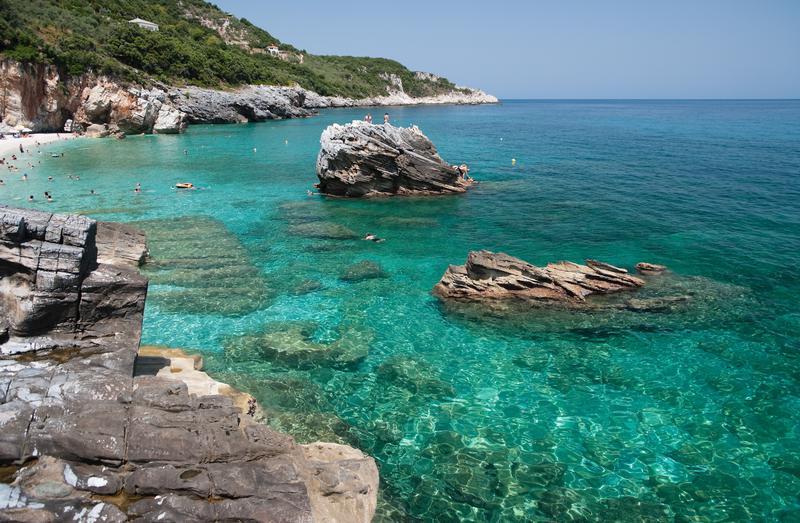Four perfect places to explore the coastal landscape of Europe
From the cool winds of the Atlantic to the warm waters of the Mediterranean, Europe’s coastline defines the continent in every way. It has created communities, inspired exploration, driven trade and attracted tourism, while remaining a constant source of natural wonder.
The inspirational coastal landscape of the Pelion Peninsula is heaven on earth for devoted sun worshippers.

So legend has it, the Greek gods used to take their summer holidays on the peninsula of Pelion. With the warm Pagasetic Gulf on one side and the open Aegean Sea on the other, it was the perfect place for Zeus, Apollo, Poseidon and their omnipotent friends to relax after a tough year of godly duties.
Indeed. The same earthly delights that attracted the gods continue to draw the devoted today. Here it’s possible to see the whole of Greece in one place. There is the beauty of the mountains, the magic of the beaches, authentic village life and typical cuisine.
Internationally, the peninsula that shapes Pelion and its main center of Volos may be lesser known than the Costa Brava in Spain or the South of France, but it offers a refreshingly different European experience.
The stunning city of Dubrovnik has been shaped by a rich coastal history.
Taking the cable car 778 meters to the top of Mount Srd is the fastest way to appreciate why the Croatian city of Dubrovnik is one of Europe’s most precious coastal gems. Set in sparkling Adriatic waters and gift-wrapped in two kilometers of medieval wall, this photogenic jumble of terracotta roofs has got to be one of the most recognizable cities in the world.

Dubrovnik has been a coastal link between east and west since 600AD. By the 16th century it was a successful rival to Venice with 200 merchant ships connecting to every significant port in the Mediterranean and as far as Britain, Germany and Belgium. Today those medieval walls echo with the laughter of tourists, the chink of cool ice in hot summer bars, the sizzle of grilling fish and the contented creak of expensive marina yachts.
Rügen on the Baltic coast of Germany is one of Europe’s best -kept secrets.
From natural wonders such as chalk cliffs, endless hiking trails and ancient beech forests to man-made attractions including 18th century theatres, seaside resorts and an abandoned Nazi holiday camp, this 900km² islands on the Baltic Sea is extraordinarily diverse. Rügen’s 85 kilometers of beaches have been attracting visitors since tourism was invented. Along the manicured promenades of elegant resorts, the elaborate holiday homes of wealthy sun-seekers date back well into the 19th century. These gentrified villas, mansions and hotels are an unusual fusion of just about every architectural style you can imagine from French and Italian Renaissance to Gothic Art Nouveau.

Loaded with ornate balconies, towers, gazebos and filigree flourishes, this confection of styles, all freshly painted white, gives the impression of being on an intriguing film set. But make no mistake! These resorts have the same air of exclusivity that infuses Biarritz in France, San Sebastian in Spain or anywhere on Italy’s Amalfi coast.
The ‘Ring of Kerry’ is a coastal road that scoots past sandy beaches, cuts through pastel-colored villages and teeters on the edge of spray-slashed Atlantic cliffs.
Far, far away in the wild west of Ireland is a primeval forest. Ferns, plants and moss-covered trees that can trace their ancestry back to Jurassic times flourish in the warm Gulf Stream that caresses the Kerry coastline. Along the “Ring of Kerry,” a 178-kilometre circular road that grips the Atlantic coastline from Kenmare in the south to Killarney in the north, the nature takes your breath away and the stories flow like Guinness. It is a European coastal epic.

In the town of Killarney, a traditional starting point for the “Ring of Kerry”, every other building seems to be a pub and every other pub seems to feature live music. From traditional jigs to U2 covers, the flavor is proudly Irish and the sing-a-longs irresistible.